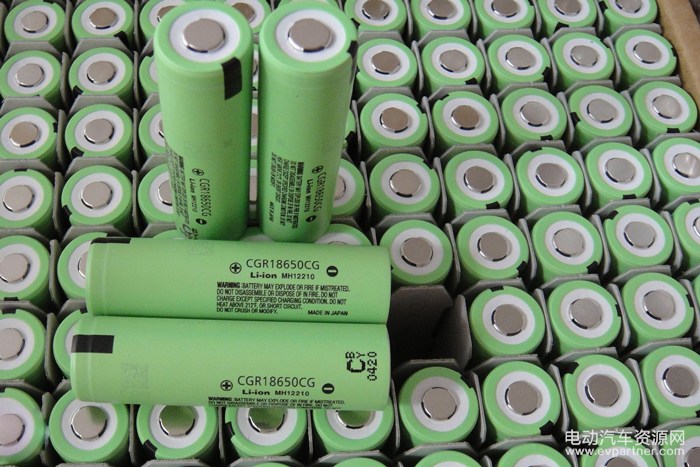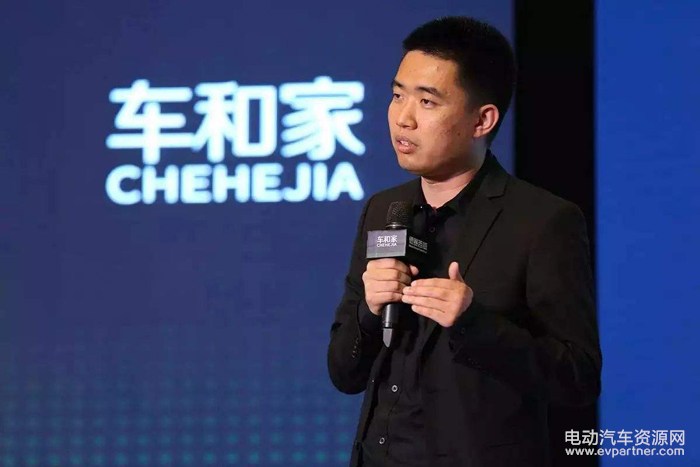In December 2017, the production and sales of new energy vehicles were perfectly completed, with production and sales of 149,000 units and 163,000 units respectively, which also made annual production and sales close to 800,000 vehicles, reaching 774,000 units and 777,000 units respectively. While the new energy vehicles are booming, they have further driven the development of the power battery market, the expansion of production capacity, the increase of energy density, the optimization of product quality, the issuance of new national standards, the introduction of power battery recycling standards, and the continuous improvement of the regulatory system; IPO, Sands was launched in the era of Ningde Jiang acquired AESC and the capital market continues to perform well. Standing at the starting point of 2018, looking back on 2017, the electric vehicle resource network selected 10 major news events in the field of power batteries and interpreted the impact behind the incident.
policy
1. Four ministries and commissions issued an action plan to promote the development of automotive power battery industry
In February 2017, the Ministry of Industry and Information Technology, the National Development and Reform Commission, the Ministry of Science and Technology, and the Ministry of Finance jointly issued the “Action Plan for Promoting the Development of the Automotive Power Battery Industryâ€. The electric vehicle resource network reporter learned that the main goals of the power battery industry in the future As of 2020, the new lithium-ion power battery has a specific energy of more than 300 watt-hour/kg; the system's specific energy will strive to reach 260 watt-hours/kg, the cost will drop below 1 yuan/watt, and the operating environment will reach -30°C. 55 °C, with 3C charging capability. By 2025, breakthroughs will be made in the new system's power battery technology, with a monomer specific energy of 500 Wh/kg. By 2020, the total capacity of the power battery industry will exceed 100 billion watt-hours, leading to an internationally competitive leader with a production and sales volume of over 40 billion watt-hours.
Reasons for selection: The plan puts forward specific development goals for power batteries, and is also a national requirement for power battery companies, which is conducive to standardizing the development of the industry. The power battery is the heart of the electric vehicle. The four ministries jointly issued a document and once again demonstrated the country’s determination to develop new energy vehicles.
2. Three new national standards for power battery release involving product specifications/coding rules/recycling
On July 12, 2017, the reporter of the Electric Vehicle Resources Network was informed that the General Administration of Quality Supervision, Inspection and Quarantine and the National Standardization Administration approved 312 national standards, among which three related standards for power batteries for electric vehicles are GB/T 34013-2017. “Specifications for Power Battery Product Specifications for Electric Vehiclesâ€, GB/T 34014-2017 “Encode Regulations for Automotive Power Accumulatorsâ€, and GB/T 34015-2017 “Recovery and Recovery of Vehicle Power Remaining Energyâ€, 3 standards will be published in 2018 It will be implemented from February 1.
Reason for selection: The release of product standards has made the development of the industry more standardized and orderly, and has further promoted the recycling of power batteries.
3, the National Standards Commission announced the recycling of vehicle power battery recycling specification
On May 12, 2017, the National Standardization Administration approved GB/T 33598-2017 "Recycling and Dismantling Specification for Vehicle Power Battery". This standard applies to the dismantling of battery packs (packs) and modules for used lithium-ion power batteries and metal hydride nickel-based power batteries. It does not apply to the dismantling of scrap batteries used in automobiles. This standard was implemented on December 1, 2017.
Related news: 17 companies join forces to recycle new energy batteries
Reason for selection: With the first batch of power batteries declining, the recovery system for power batteries has been established. It is imperative to standardize the recycling of power batteries.

market
4ã€7 Power Battery Projects Selected in the 2017 Intelligent Manufacturing Pilot Demonstration Project by the Ministry of Industry and Information Technology
On October 16, 2017, the Ministry of Industry and Information Technology announced the 2017 Smart Manufacturing Pilot Demonstration Project List, a total of 97 projects, including 5 new energy automobile projects, including intelligent manufacture of lithium titanate materials, digital lithium titanate workshops, and new energy vehicles. Power battery smart manufacturing (3), new energy vehicle power battery smart factory (2).
Reason for selection: policy guidelines, support for quality projects, and guide the development direction of the industry.
5. The first prospectus in the Ningde era
On November 10, 2017, Ningde Times New Energy Technology Co., Ltd. (abbreviation: Ningde Times) issued a prospectus (submission paper) for initial public offering of shares and listing on the GEM. In the Ningde era, it is planned to publicly issue A shares of no more than 217 million shares, and plans to raise 13.12 billion yuan of funds for use in the Lishi Lithium-ion power battery production base project and power and energy storage battery R&D projects.
Reason for selection: Power battery giants landed on the capital market, and the largest IPO in the history of China's power battery industry started.
6. BYD confirmed that it will open its power battery business
In May 2017, BYD's power battery will be available for the supply of all automakers in the market. In June, the news was confirmed by BYD. Wang Chuanfu said at a general meeting in June that power battery sales have been discussed with several major passenger car brands, and some have entered a substantive stage. Wang Chuanfu said that since the power battery is the core component of the electric vehicle, it needs a longer development period to match with the downstream manufacturers, and mass production is expected to be one year later. Because BYD is both a battery manufacturer and an automotive manufacturer, and some vehicle manufacturers have doubts, BYD will use supply batteries and supply it to OEMs in the form of third-party PACK vendors.
Reason for selection: China's electric car giant splits its battery business, and another power battery giant is about to be born.
7. SKI confirmed that the power battery plant in China has stopped production
In March 2017, Korea’s SK Innovation (SKI) announced that its corporate entity in Beijing, Beijing Electronic Controls Aishida Technology Co., Ltd. (BESC) has stopped at the end of last year due to a reduction in the number of battery orders. produce. Beijing Electronic Controls is a joint venture established by SKI with Beijing Automotive Group and Beijing Electronics Holdings Co., Ltd. in 2013. SKI holds 40% of the shares. The joint venture company in June 2014 mainly supplied batteries for the new energy models of BAIC.
Reason for selection: South Korean battery companies missed the feast of China's new energy vehicles because of the recommended list of restrictions. SKI's suspension of production started the closure of Korean companies. Since then, LG has transferred Nanjing plants and Samsung SDI's Tianjin plant has been insolvent.
8. Sanyo Energy Power Battery Co., Ltd. has entered the recommended directory for the joint venture
On July 31, 2017, the "Catalogue of Recommended Vehicles for Promotion and Application of New Energy Vehicles" (7th Batch in 2017) was formally released, and 282 new energy vehicles were selected. In the list of recommendations released this time, the electric vehicle resource network found that the pure electric van belonging to the product model EQ5045XXYTBEV7 entered the recommended list. It is worth noting that the power battery that the vehicle carries is powered by a Sino-foreign joint venture Sanyo Energy (Suzhou). ) Co., Ltd. (abbreviation: Sanyo Energy) production. Sanyo Energy (Suzhou) Co., Ltd. is a joint venture established in October 2000 between Wuzhong District Qikou Town Collective Asset Management Corporation and Japan’s Sanyo Electric Corporation.
Reason for selection: Due to special reasons, foreign-funded enterprises' power battery products have always been excluded from the list of recommendations. This time, Sanyo Energy's joint venture channel has become another possibility for foreign investors to enjoy subsidies.
9, Jinsha River formally acquired AESC
On August 8, 2017, Nissan issued a statement saying that the company reached an agreement with Jinshajiang Capital and signed a final sale and purchase agreement. Jinshajiang Capital will purchase Nissan’s battery business and related production equipment. The signing of the sale and purchase agreement between the two parties includes not only Nissan’s battery subsidiary, AESC, but also Nissan’s battery manufacturing operations in the United States and the United Kingdom, and some Nissan’s battery development and engineering operations in Japan.
Reason for selection: China's capital has acquired Japan's battery giant for the first time. AESC was once the world’s leading manufacturer of electric vehicle batteries. With strong technology accumulation, it will be an important step for the Jinsha River to lay out the new energy auto industrial chain. In October 2017, Nissan Battery’s headquarters in China and its base, which invested 12.5 billion yuan, were contracted to settle in Zhenjiang.
10. Car and home PACK plant put into production
On September 27, 2017, Changzhou Chezhi Wing Power Technology Co., Ltd., a car and home subsidiary, held a production ceremony. The factory can meet the requirements for flexible production of more than 20 types of battery packs. The automation rate of the module production line is 100%, the entire factory automation rate is 80%, and 200,000 battery cores can be processed per day, and 300,000 battery packs can be produced each year.
Reasons for inclusion: The new force of R&D operators will lay out power batteries and explore new models for the development of emerging R&D forces.

Heated Face Brush,Face Cleansing Brush,Electric Face Cleaning Brush,Heating Skin Brush
Pingyang Ruiqiang Home Appliances Factory , https://www.iiyocare.com